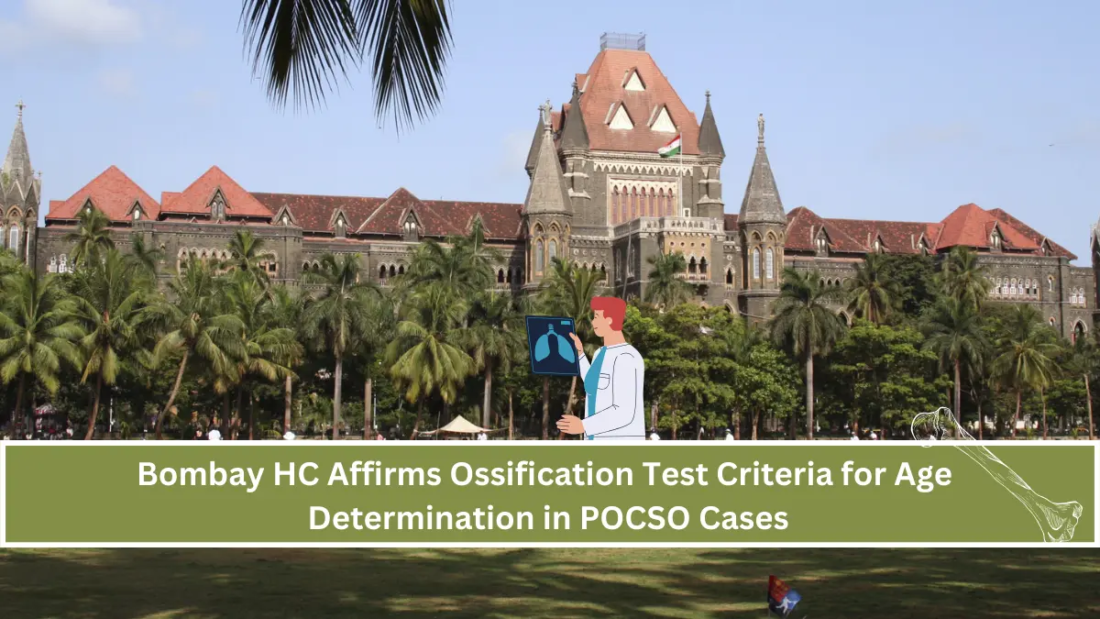Introduction: The case revolves around an appeal challenging the conviction of the accused under the POCSO Act. The Bombay HC delves into the significance of the Bone Ossification Test in age determination, echoing the Supreme Court’s directive.
Facts of the Case: X v. State of Maharashtra (Criminal Appeal No. 718 of 2016)is anappeal filed before Bombay HC it arises from the conviction of the original accused by the Special Judge under the Protection of Children from Sexual Offences Act (POCSO Act) and relevant sections of the Indian Penal Code. The victim, a 14-year-old girl, allegedly faced sexual assault on 24.08.2015, leading to the filing of a complaint.
Contention of the Petitioner (Accused): The defense contends that the trial judge failed to properly evaluate the evidence. They argue a delay in filing the FIR and question the credibility of the victim’s identification of the accused. The defense also asserts that the victim’s statement under Section 164 of the Code of Criminal Procedure did not name the accused, and no Test Identification Parade was conducted. The defense seeks acquittal based on alleged procedural lapses and discrepancies in the victim’s statements, while the prosecution maintains the validity of the conviction.
Contention of the Respondent (State): The prosecution counters that the victim’s age has been substantiated by school records. They assert there was no delay in filing the FIR and argue that the victim correctly identified the accused based on establishing his residence. Medical evidence supports the victim’s testimony of sexual assault, and the spot panchanama aligns with her account, justifying the trial judge’s decision.
Court’s Observation: The Court initiated its examination by focusing on the credibility of the victim, (P.W.1). Her testimony was considered in detail, emphasizing that the trial judge had taken precautions to ensure her ability to comprehend questions. The court noted her birth date aligned with school records, and she provided a consistent account of the incident, emphasizing the trauma-induced delay in disclosure. The court addressed the defense’s challenge regarding the identification of the accused by the victim, emphasizing the adequacy of her identification in broad daylight.
The bench of the HC asserted that the victim’s age was substantiated through her father’s testimony. Citing the precedent of P. Yuvaprakash v. State (2023), where the Supreme Court emphasized adherence to Section 94 of the Juvenile Justice Act in age disputes, the court highlighted the provision’s directive for resorting to an ossification test if official birth records are unavailable, as specified in Section 94. It stated “There was no ossification test conducted in this case, however, this question would come when the girl is on the border line. When there is still margin of four years, it cannot be said that the girl was not a “child” as defined under Section 2(d) of the POCSO Act. The father of the victim who has the knowledge of the date of birth of the daughter, his testimony would be also important in that respect and, therefore, in this case the prosecution had proved that the victim was a child.”
*Bone Ossification Test: It is a method for evaluating an individual’s age by analyzing their skeletal structure/ bony framework. This test allows for a reasonably precise estimation of a person’s age, particularly during their early years.
Court’s Decision: After meticulous scrutiny of the evidence, the court concluded that the victim’s testimony was reliable and consistent. The court dismissed the defense’s arguments regarding the identification of the accused, highlighting the absence of efforts to discredit the victim’s recognition. The court also considered medical evidence, acknowledging a lack of conclusive findings but emphasizing the significance of the victim’s consistent account. Ultimately, the court affirmed the trial judge’s decision, stating that the prosecution had successfully proven the accused’s guilt, and the appeal was dismissed.
 Cart is empty
Cart is empty 

